The spent nuclear fuel storage facility at the Krško nuclear power plant in Slovenia has just been commissioned with the placement of the first Holtec HI-STORM FW cask in the facility.
The dry storage building is one hundred and sixty feet by two hundred and thirty feet by sixty-six feet. It has a reinforced concrete base that is six feet thick. The plant is operated by Nuklearna Elektrarna Krško (NEK). They explained that the base and “the perimeter walls, provide protection against flooding and enable the anchoring of storage containers”. Equipment has been installed that allows monitoring by the International Atomic Energy Agency.
Each HI-STORM cask will hold thirty-seven spent fuel assemblies. A thick concrete shell provides full physical and radiological protection against extreme weather, earthquakes or an airplane crash. The containers have been designed to “enable the transport of the fuel elements in the future as part of a permanent solution”. In the first spent nuclear fuel loading project, sixteen HI-STORM FW casks holding a total of five hundred and ninety-two spent fuel assemblies will be placed in dry storage by late 2023.
Holtec was awarded a contract by NEK in February 2017. The contract included the design and construction of a dry storage building, replacement of the fuel handling building crane trolly, and supply of equipment and services.
Holtec stated that to ensure a large margin of structural safety, a seismically restrained version of the HI-STORM FW system was utilized for the Krško project. The seismic restraint system uses a robust steel structure embedded within the thick concrete foundation platform of the storage building. The HI-STORM FW casks are certified to withstand a severe earthquake that produces foundation pad accelerations two times greater than the Earth’s gravity. Holtec said that “The custom-engineered domed lid of the HI-STORM FW, unique to this project, is a Holtec innovation developed to engineer an impact-capable design.”
Rick Springman is the Holtec Senior Vice President of International Projects. He said, “Our success is a testament to the teamwork and ingenuity of the trans-national project team that executed the project. Commissioning of this facility was indispensable to support Krško’s continued generation of 24/7 clean nuclear power, which is critical to Slovenia’s clean energy aspirations”.
The seven hundred megawatt Krško plant is a Westinghouse pressurized water reactor. It was the first western nuclear power plant constructed in eastern Europe. Construction of the Krško plant began in 1975 and it was connected to the Slovenian grid in 1981. It began commercial operation in 1983.
In January of this year, the Slovenia’s Ministry of the Environment approved Krško’s operations for a further 20 years. The approval followed the completion of an environmental impact assessment. The assessment included input from neighboring countries Croatia, Austria, Italy and Hungary, plus Germany.
NEK said, “With the introduction of dry storage, we will fulfill all the conditions and implement the decisions of the administrative bodies to extend the operation of the nuclear power plant and provide customers with electricity at a reasonable price for another two decades.”
Blog
-
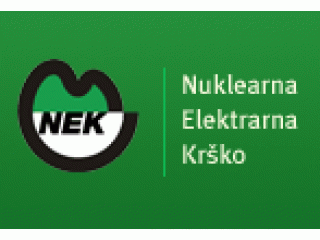
Radioactive Waste 902 – Nuklearna Elektrarna Krško In Slovenia Commissions Dry Cask Storage Facility For Storage of Spent Nuclear Fuel
-
Nuclear News Roundup Apr 10, 2023
ThorCon begins pre-licensing consultation in Indonesia world-nuclear-news.org
Westinghouse Celebrates Milestone Achievement for China’s Sanmen Nuclear Plant finance.yahoo.com
Ukrainian drone crashes near Zaporizhzhia nuclear plant – Russian media reuters.com
Ukrainian drone crashes near Zaporizhzhia nuclear plant dwe.com dw.com
-
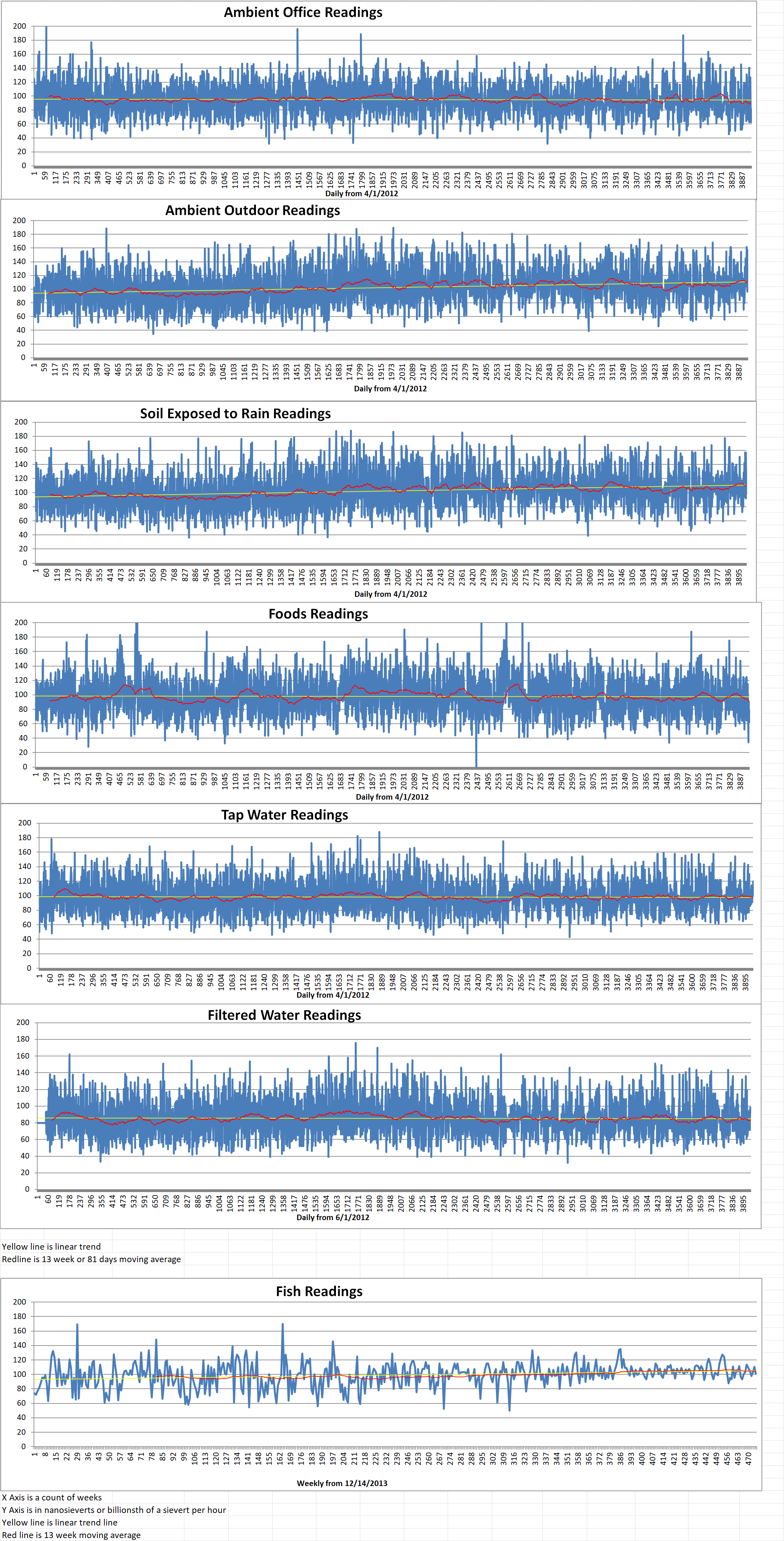
Geiger Readings for Apr 10, 2023
Ambient office = 71 nanosieverts per hour
Ambient outside = 132 nanosieverts per hour
Soil exposed to rain water = 130 nanosieverts per hour
Tomato from Central Market = 79 nanosieverts per hour
Tap water = 120 nanosieverts per hour
Filter water = 97 nanosieverts per hour
-
Nuclear News Roundup Apr 09, 2023
North Korea warns ‘offensive action’ over allies’ drills apnews.com
Act aims to accelerate US deployment of new nuclear world-nuclear-news.org
Two more Natrium units for coal-to-nuclear switching world-nuclear-news.org
US flies nuclear-capable bombers as tensions soar with N Korea Aljazeera.com
-
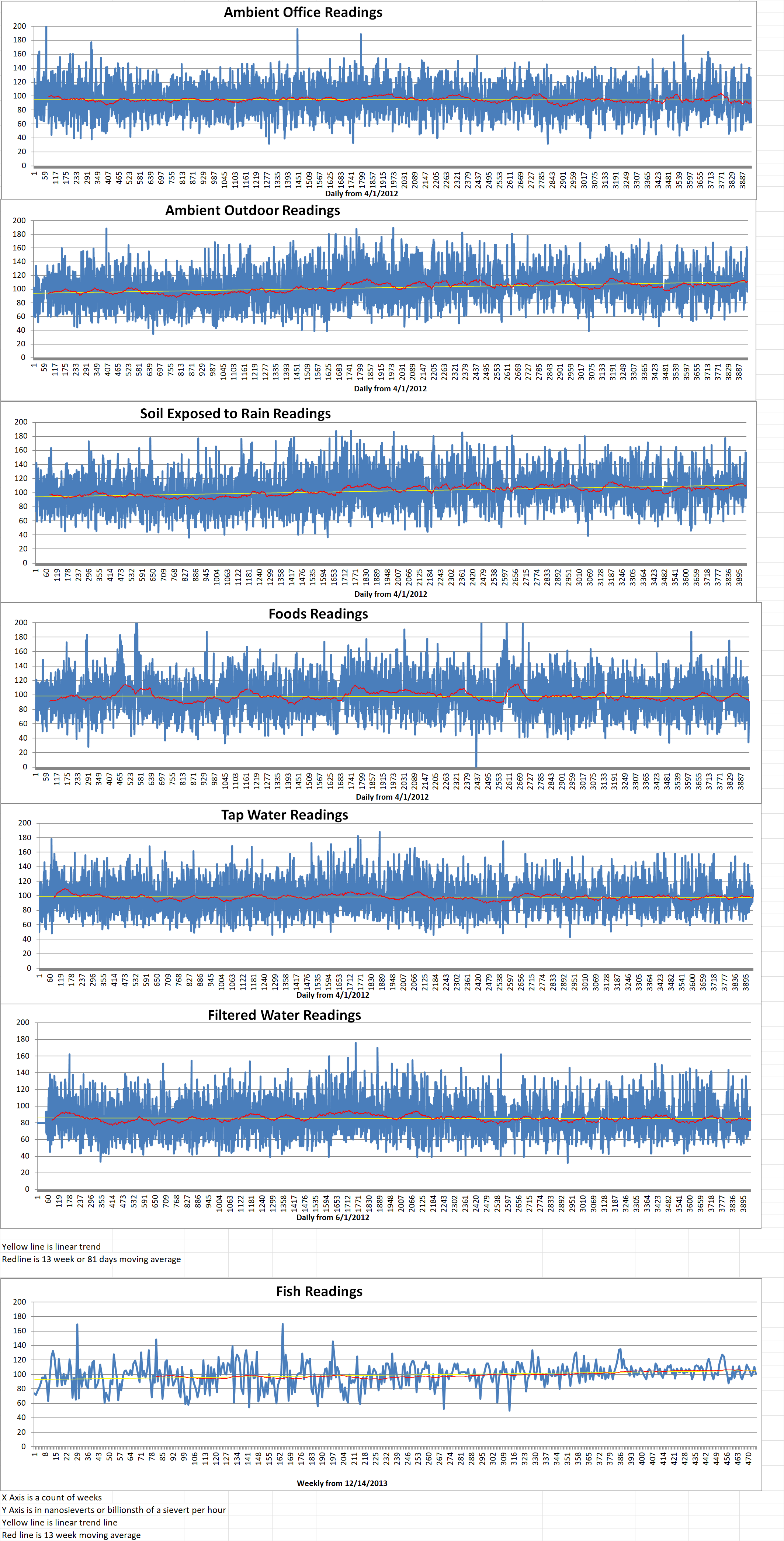
Geiger Readings for Apr 09, 2023
Ambient office = 81 nanosieverts per hour
Ambient outside = 97 nanosieverts per hour
Soil exposed to rain water = 99 nanosieverts per hour
Reed bell pepper from Central Market = 62 nanosieverts per hour
Tap water = 100 nanosieverts per hour
Filter water = 93 nanosieverts per hour
-
Nuclear News Roundup Apr 08, 2023
ThorCon begins pre-licensing consultation in Indonesia world-nuclear-news.org
Westinghouse Celebrates Milestone Achievement for China’s Sanmen Nuclear Plant finance.yahoo.com
Ukrainian drone crashes near Zaporizhzhia nuclear plant – Russian media reuters.com
Ukrainian drone crashes near Zaporizhzhia nuclear plant dwe.com dw.com
-

Geiger Readings for Apr 08, 2023
Ambient office = 62 nanosieverts per hour
Ambient outside = 157 nanosieverts per hour
Soil exposed to rain water = 157 nanosieverts per hour
Green onion from Central Market = 73 nanosieverts per hour
Tap water = 108 nanosieverts per hour
Filter water = 94 nanosieverts per hour
Dover Sole from Central = 101 nanosieverts per hour
-
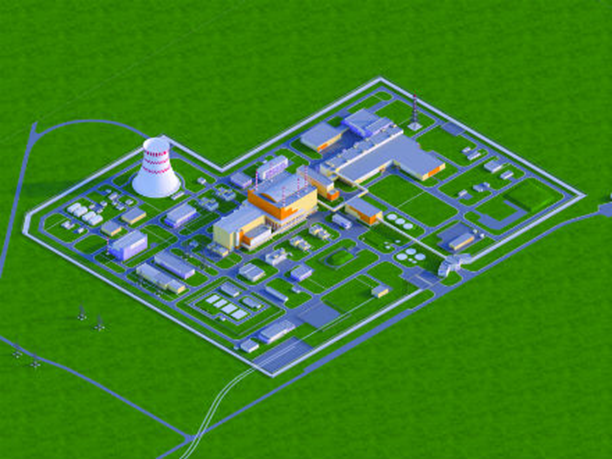
Radioactive Waste 901 – RePlanet Calls For The Use Of Spent Nuclear Fuel To Power Fast Breeder Reactors – Part 2 of 2 Parts
Part 2 of 2 Parts
The RePlanet report points out that “Using this fuel in a new generation of fast-neutron reactors would eliminate it as a ‘waste’ concern via a carbon-free waste-to-energy process. Most of the remaining leftover fission products would return to a level of radioactivity comparable to the original uranium ore within 200-300 years. This means that current deep geological disposal strategies can be simplified and scaled back.”
The report goes on to say that “While the economics of fast reactors are currently unproven, if resources currently intended for deep geological disposal of spent fuel were diverted instead into a fast reactor program that would enable the re-use of that fuel, this would turn a burden into a useful part of a legitimate circular economic activity.”
The report further notes that “Many countries in the past have run fast reactor prototypes, such as EBRII in the United States, Phénix in France, Monju in Japan and the Russian BN fast reactor program. The Western programs were closed down prematurely for a combination of political and technical reasons, with only the Russian effort currently continuing…. (Due to the war in Ukraine, we do not discuss the Russian fast reactor program further in this report.)”
This is unfortunate because a close look at Russia’s fast reactor program would show that the economics of fast reactors in not “unproven”. Russia’s BN-600 at Unit 3 of the Beloyarsk nuclear power plant has been operating and supplying power since 1980. It is one of the more efficient and economic nuclear power reactors in the country. Furthermore, Russia’s pilot demonstration power complex (PDEK) under construction at Siberian Chemical Combine based on the Brest-OD-300 fast reactor has been specifically designed to reuse spent nuclear fuel at a single site. This site also includes fuel fabrication and recycling facilities.
RePlanet says “We are not, however, proposing 100% of generation from fast reactors. If we instead assume, for illustrative purposes, that renewables (plus whatever is the size of the light-water reactor fleet at the time) make up 80% of generation on an annualized basis, this means fast reactors need only to generate 20% of power, allowing us to multiply the available energy in current fuel stockpiles by a factor of five. Fast reactors could therefore make up the difference for a fully carbon-free electricity grid for over a thousand years, even at tripled rates of electricity use in our high estimate, if they work in support of renewables.”
The report concludes, “The rapid deployment of today’s modern, commercially available ‘once-through’ nuclear reactor technology should not be abandoned, even as we push for fast reactors to become available. Fast breeder reactors are able to work together with existing reactor designs, since breeders produce enough fuel to resupply not just themselves but also an additional conventional reactor of the same power. All forms of nuclear can thus also work together, in partnership with renewables.”
There is concern that the plutonium extracted from spent nuclear fuel to fuel fast breeder reactors could be made into nuclear weapons and pose a proliferation risk. -
Nuclear News Roundup Apr 07, 2023
National Security Council Secretary on Shoigu’s statements about nuclear Iskander missile systems in Belarus: Russia’s pure bluff news.yahoo.com
Extract energy from used nuclear fuel, says environmental group world-nuclear-news.org
Lithuania Offers Carve-Outs to EU Sceptics Over Russia Nuclear Sanctions usnews.com
Hartlepool EDF nuclear reactor shut down after fault bbc.com
-
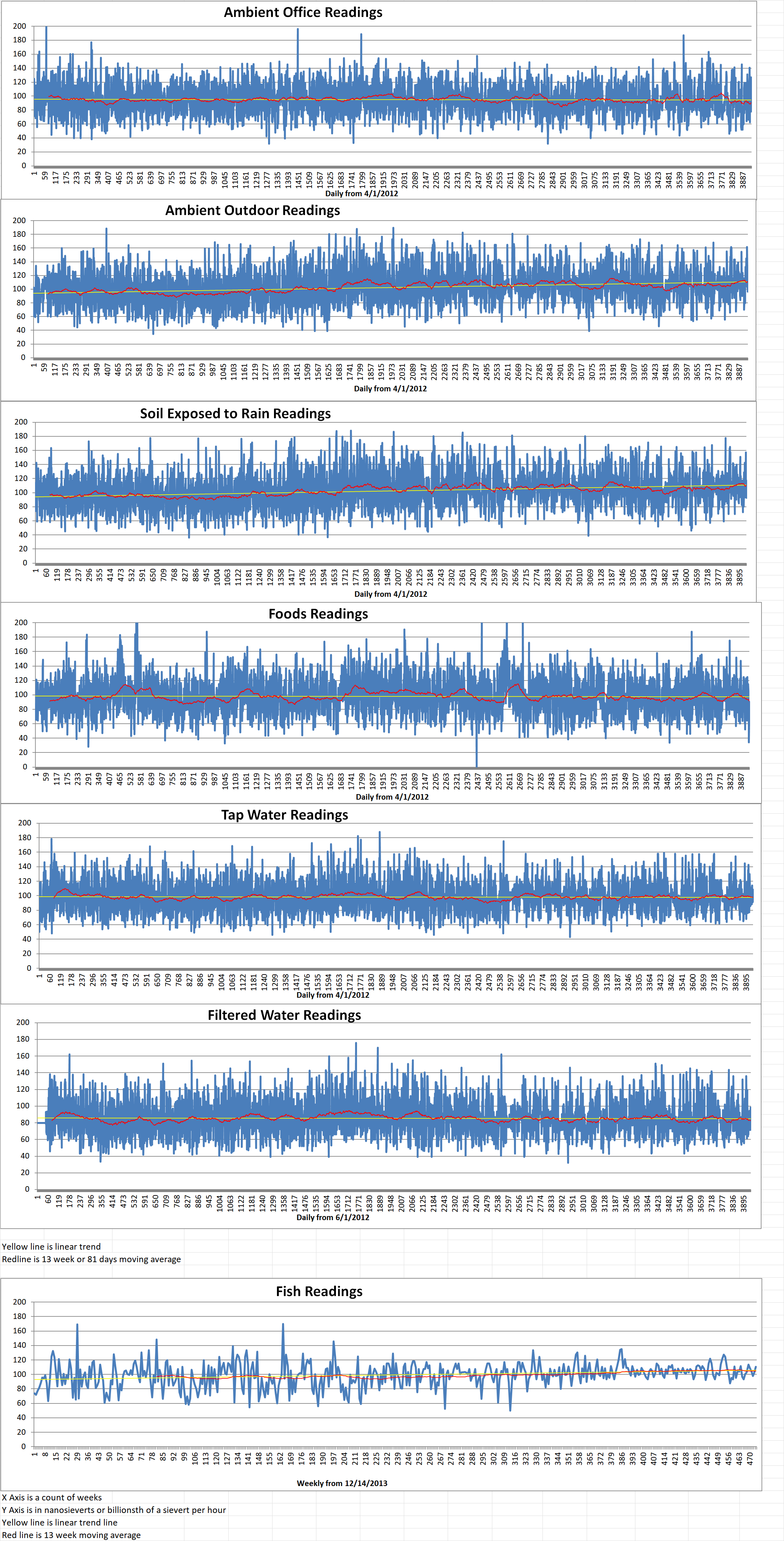
Geiger Readings for Apr 07, 2023
Ambient office = 81 nanosieverts per hour
Ambient outside = 96 nanosieverts per hour
Soil exposed to rain water = 93 nanosieverts per hour
English cucumber from Central Market = 80 nanosieverts per hour
Tap water = 106 nanosieverts per hour
Filter water = 98 nanosieverts per hour
